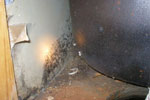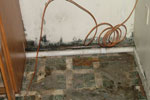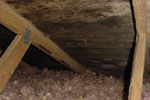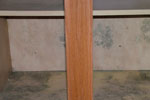  |
 Mold Resources from ASI The information provided here is for informational purposes only-any health related questions should be directed to your family Doctor. If you are looking for an unbiased party to answer your questions regarding mold, then contact the Environmental Protection Agency Indoor Air Quality Information Clearinghouse at (800) 438-4318. They can help you with providing information or answering questions related to mold and other indoor air quality issues. Mold - Should You Be Concerned? |
Should I hire a professional Mold Inspector? There are a few things you need to consider when making this decision: 1) Mold clean-up is generally considered a part of regular home maintenance, although you must educate yourself before you attempt this on your own. You can create a serious problem which could cost thousands to correct if you don’t know what you’re doing. So, learn when it is appropriate to clean the area yourself, and when you should seek the advice of a professional. To help with this decision call the EPA Clearinghouse at (800) 438-4318. 2) It may not always be necessary to take samples. Because Environmental Professionals are taking part in a high liability industry, we must protect ourselves by recommending sampling before taking on that liability. That is why a Doctor may take a number of tests on a patient to ensure he limits his risk to law suits. You have to decide if you are willing to pay the extra money. If there has been a water intrusion event and there appears to be mold growth, sampling may not be necessary. Although, not sampling when the inspector recommends it may be relieving him of his liability. It’s your call. Call the EPA for help in answering questions about the need to sample. 3) Not all inspectors carry professional insurance coverage. Insurance is expensive, and with no state or federal regulations, a mold inspector does not have to carry insurance in order to do business. Check to see if your inspector does have coverage before doing business with him. Then, read his contract to try and determine if he is attempting to limit his liability. Some inspectors place all the liability on the homeowner, therefore eliminating the need for insurance. 4) Check the certifications of the person doing the inspection-they should have a certification from a professional organization who has established recommended standards to follow. These may include-Indoor Environmental Standards Organization (IESO), Environmental Solutions Association (ESA), or the American Council for Accredited Certification (ACAC) to name a few of the most well known. The websites for these organizations are listed in the links section of this web site. Visit these sites for other valuable information and to view a list of certified professionals in your area. The following resources should be helpful in learning the basics about mold: Environmental Protection Agency (EPA): A Brief Guide to Mold, Moisture and Your Home California Department of Health and Services: Mold in My Home, What do I do? If you are interested in the guidelines for cleaning then consult the following: Environmental Protection Agency (EPA): Mold Remediation in Schools and Commercial Buildings . (Information in this publication can be used for Residential clean-up.) If you are interested in an educational mold course then view the following: Environmental Protection Agency-EPA Mold Course These resources should provide you with the information you need to educate yourself on how to protect your family and property. All the information here is provided by state and federal governmental agencies who are attempting to put out the best un-biased information. I hope you find this helpful. Feel free to call or e-mail me with any questions, suggestions or comments you have. Why does mold cause Respiratory problems?
To view a complete inspection report click here.
Copyright © 2004-2020 - Scott Sauer - All Rights Reserved E-mail Web Master at asiinspector@gmail.com |





